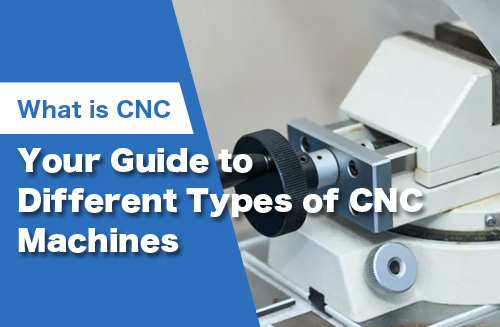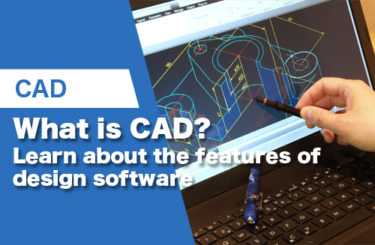Some people think CNC is difficult, but that’s not the case; It’s just a type of machine.
This time, I would like to explain CNC more clearly.
- 1 What is CNC?
- 2 What is CNC used for?
- 3 Types of CNC Programming
- 4 Types of CNC Machining Operations
- 5 Types of CNC machines
- 6 CNC Machine Axis Types
- 7 What Is a Machining Center?
- 8 Advantages and Disadvantages of Using a CNC Machine
- 9 Who Should Use a CNC Machine?
- 10 Materials Used in CNC Machining
- 11 How to Choose the Right CNC Machine for Your Business
- 12 CNC Machine Applications
- 13 Tips for Using a CNC Machine Safely and Effectively
- 14 Final Thoughts
What is CNC?

Source: Directindustry.com
CNC stands for Computer Numerical Control. It’s a way to control machines using a computer. Imagine you have a robot that can cut, carve, or shape materials like metal, wood, or plastic. CNC is like the brain of that robot. You tell the computer what you want to make, and it sends instructions to the machine about how to move and what to do.
This way, you can create very precise and detailed things, like parts for cars, airplanes, or even simple things like signs and furniture. It’s like printing, but instead of ink on paper, you’re cutting or shaping solid materials.
The steps in the CNC machining process can be divided into four main categories:
- Programming: The CAD model or blueprint is converted into a set of instructions, known as G-code, which tells the CNC machine how to move and cut the material.
- Setup / mounting: The raw material is mounted on the CNC machine and the cutting tool is positioned according to the G-code instructions.
- Machining / cutting: The CNC machine executes the cutting instructions to remove material from the raw material and create the desired part.
- Finishing: The machined part may undergo a finishing process such as heat treatment or surface coating to improve its properties.
What is CNC used for?

CNC is a machine that makes parts by cutting materials and cutting them into desired shapes. CNC is mainly used in the manufacturing and construction industries.
Even individuals can use CNC. However, there are very few CNCs available for home use, and it is quite expensive, so most people will not do it. Highly recommended if you are running your own business.
Types of CNC Programming
An essential aspect of CNC machines is that they are controlled by a computer program. This program tells the machine what to do and how to do it, and there are different types of CNC programming:
- Manual
- Computer-Aided Manufacturing (CAM)
- Conversational Programming
Manual Programming
Manual programming is the most basic form of CNC programming. In manual programming, the programmer tells the machine what to do step-by-step. This is the slowest and most tedious form of CNC programming, but it is also the most straightforward.
CAM Programming
CAM programming is a more advanced form of CNC programming. In CAM programming, the programmer creates a computer model of the part that needs to be machined, using CAD software like AutoCAD or SolidWorks. The software then automatically generates the code necessary to produce the part. This is the fastest and most efficient form of CNC programming.
Conversational Programming
The last and most advanced method of programming CNC machines is known as conversational programming. Using this method, conversational programming allows operators to create programs for a CNC machine quickly and easily. Prompts involving part geometry, work-piece material, and tooling guide operators through the process so that anyone can generate a program in minutes. This is the most user-friendly form of CNC programming and is ideal for those who are not experienced in programming.
The downside is that conversational programming is limited in its capabilities. It can only be used to create simple programs for CNC machines. For more complex parts, manual or CAM programming is necessary.
Types of CNC Machining Operations
The three main types of CNC machining operations are turning, milling, and drilling.
Turning
Turning is a type of CNC machining operation in which the cutting tool moves along the axis of the workpiece to create cylindrical parts. Machine tools that can perform turning operations are lathes. Examples of parts that can be created using turning are screws, shafts, and pipes.
Milling
Milling is a type of CNC machining operation in which the cutting tool moves across the surface of the workpiece to create flat or complex shapes. Machine tools that can perform milling operations are mills and machining centers. Examples of parts that can be created using milling are gears, brackets, and frames.
Drilling
Drilling is a type of CNC machining operation in which the cutting tool moves vertically into the workpiece to create holes. Machine tools that can perform drilling operations are drills and machining centers. Examples of parts that can be created using drilling are holes for fasteners.
There are also several specialized CNC machining operations such as grinding, sawing, boring, etc. These operations are used to create specific types of parts or to finish the surface of a part.
Types of CNC machines
There are many different types of CNC machines, which we will cover below.
- CNC Lathe
- CNC Milling Machine
- CNC Router Machine
- CNC Drill Machine
- CNC Plasma Cutter
- CNC Laser Cutter
- CNC Water jet Cutter
- Wire EDM Machine
- CNC Grinde
CNC Lathe
A CNC lathe is a machine that rotates a workpiece around an axis of rotation while applying tools to the raw material to perform various operations to cylindrical parts.
CNC Milling Machine
CNC milling is a process that uses rotating cutters to remove material from a block of material until the desired shape is achieved. There are different types of CNC milling machines.
- Vertical CNC: In this type of machine, the spindle is vertically oriented.
- Horizontal CNC: In this type of machine, the spindle is horizontally oriented.
- Multi-Axis CNC: There are three main axes in this type of machine: the X, Y, and Z axes. In addition to these, there are also rotary axes that can be used for machining at different angles.
- Bed-type CNC: In this type of machine, the table is stationary and the spindle moves to perform the machining operations.
- Knee-type CNC: In this type of machine, the spindle is vertically oriented and the table moves to perform the machining operations.
CNC Router Machine
Although a CNC router machine is less precise than a CNC milling machine, it is significantly cheaper and works well with softer materials, including wood, composites, plastics, foam, and aluminum.
CNC Drill Machine
A CNC drill machine is used to create high-precision holes of various sizes and depths in all types of materials, including metals, plastics, composites, and wood.
It can perform a wide variety of tasks, such as drilling, reaming, tapping, and countersinking.
CNC drill machines employ CNC technology, which makes them more precise and versatile than traditional drilling equipment.
CNC Plasma Cutter
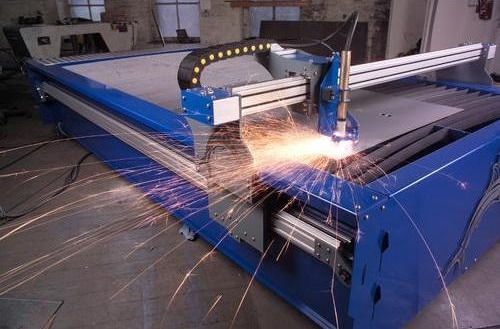
Source: Indiamart.com
A CNC plasma cutter is a machine that uses a plasma torch to cut metals. Plasma is a hot ionized gas that is created by adding energy to a gas. The plasma torch uses this hot gas to cut through metals. A plasma cutter is a very versatile machine that can be used to cut all kinds of electrically conductive metals, including stainless steel, aluminum, and copper.
CNC Laser Cutter
A CNC laser cutter is a machine that uses a laser beam to cut materials. The laser beam is generated by a laser, which is a device that amplifies light by stimulated emission of electromagnetic radiation. The laser cutter is a very versatile machine that can be used to cut all kinds of materials, including metals, plastics, glass, and wood.
CNC Water Jet Cutter
A CNC water jet cutter is a machine that uses a jet of water to cut materials. The jet of water is produced by a high-pressure pump and can reach speeds of up to Mach three (three times the speed of sound) to cut through materials. Also, the water jet can be used to cut through very thick materials, up to 12 inches (30 cm) in thickness.
Wire EDM Machine
An electrical discharge machining (EDM) machine typically features an electrode that helps to disintegrate electrically conductive materials like carbide or hardened steel. This technology is exciting because it allows for the fabrication of parts in a way that is different from conventional machining. In traditional machining, a cutting tool is rotated against a workpiece. However, with EDM, the electrode doesn’t usually make contact with the workpiece. Instead, it is positioned such that there exists a small gap between it and the workpiece.
To create cuts or fabricate parts, a high-frequency electrical spark is discharged from the electrode to the workpiece. This electric discharge vaporizes (or melts) the surface of the metal, creating desired cuts. The movement of this electrode around the workpiece to fabricate parts is usually controlled using CNC technology. However, the successful operation of EDM depends on many factors, including the type of metal being machined and the size and shape of the part.
CNC Grinder
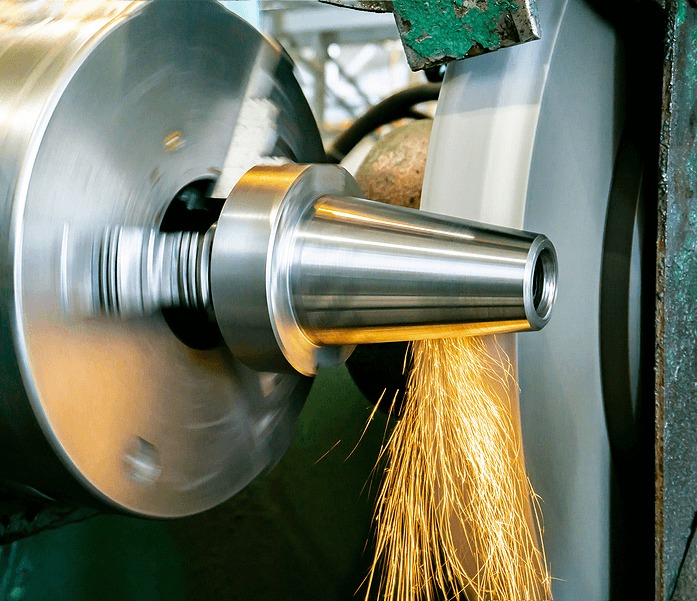
Source: Cpg1.com
CNC grinders are able to perform complex grinding operations with high precision. They are available in a variety of configurations, including surface grinders, centerless grinders, and cylindrical grinders.
CNC Machine Axis Types
| Types | Movement |
| X-axis | Left to right |
| Y-axis | Front to back |
| Z-axis | Up and down |
| A-axis | 180° rotation around the X axis |
| B-axis | 180° rotation around the Y axis |
| C-axis | rotation around the Z axis |
There are several types of axes for CNC machines.
2-axis CNC Machine
A 2-axis CNC machine is the most basic configuration and is typically used for simple operations such as milling or drilling. A CNC machine is designated 2-axis when it is capable of two directions of movement for the cutting tool — the X and Y axes.
3-axis CNC Machine
A 3-axis CNC machine is more versatile and can be used for a variety of operations, such as milling, drilling, and tapping. A CNC machine is designated 3-axis when it is capable of three directions of movement for the cutting tool — the X, Y, and Z axes.
4-axis CNC Machine
A 4-axis CNC machine is even more versatile and can be used for operations such as milling, drilling, tapping, and boring. A CNC machine is designated 4-axis when it is capable of three directions of movement for the cutting tool — the X, Y, and Z axes — and a rotational movement for the cutting tool around the X-axis, which is referred to as the A-axis.
5-axis CNC Machine
A 5-axis CNC machine is the most versatile and can be used for operations such as milling, drilling, tapping, boring, and turning. A CNC machine is designated 5-axis when it is capable of three directions of movement for the cutting tool — the X, Y, and Z axes — and rotational movement for the cutting tool around the X-axis and Y-axis, which are referred to as the A-axis, and B-axis, respectively.
What Is a Machining Center?
The term “machining center” refers to almost any CNC milling and drilling machine with an automatic tool changer and a table that secures or clamps the workpiece. It has the ability to move the cutting tool in multiple axes. This allows for more complex operations to be performed, such as milling, drilling, and tapping.
There are three main types of machining centers:
- Vertical Machining Center (VMC): A type of machining center that has its spindle oriented vertically.
- Horizontal Machining Center (HMC): A type of machining center that has its spindle oriented horizontally.
- Universal Machining Center (UMC): A type of machining center that has both horizontal and vertical spindles.
Advantages and Disadvantages of Using a CNC Machine
Below are the advantages and disadvantages of using a CNC machine.
| Advantages | Disadvantages |
|
|
Advantages
The main advantage of using a CNC machine is the high degree of accuracy and repeatability that it offers. CNC machining is also much faster than traditional methods such as hand-cutting or milling, which makes it ideal for mass production.
Another advantage of CNC machining is that it allows for very complex designs to be produced, which would be impossible to create using traditional methods. Also, because CNC machines are computer-controlled, they can be easily programmed to produce multiple copies of the same design. Therefore, if you need to produce many identical parts, CNC machining is the ideal solution.
Disadvantages
One major downside of CNC machining is the initial cost of purchasing and setting up the machine. CNC machines are also complex devices that require specialized training to operate, which can add to the overall cost.
Another potential disadvantage is that parts produced using CNC machining may have less structural integrity than those made with traditional methods. This is due to the fact that CNC machines remove material from the part in order to create the desired shape, which can weaken the overall structure. However, this disadvantage can be mitigated by choosing the right materials and using proper design techniques.
Who Should Use a CNC Machine?
In general, CNC machines are well suited for anyone who needs to produce parts with a high degree of accuracy and repeatability. This includes manufacturers who produce large quantities of parts, as well as those who need to create prototypes or low-volume production runs. If you’re considering adding a CNC machine to your manufacturing operation, be sure to weigh the pros and cons carefully to decide if it’s the right choice for you.
Materials Used in CNC Machining
CNC machining can be used to machine parts from a wide range of materials, including:
- Metals (steel, aluminum, brass)
- Plastics (acrylic, polycarbonate)
- Composites (fiberglass, carbon fiber)
- Wood
In general, any material that can be machined using traditional methods can also be machined using CNC technology.
How to Choose the Right CNC Machine for Your Business
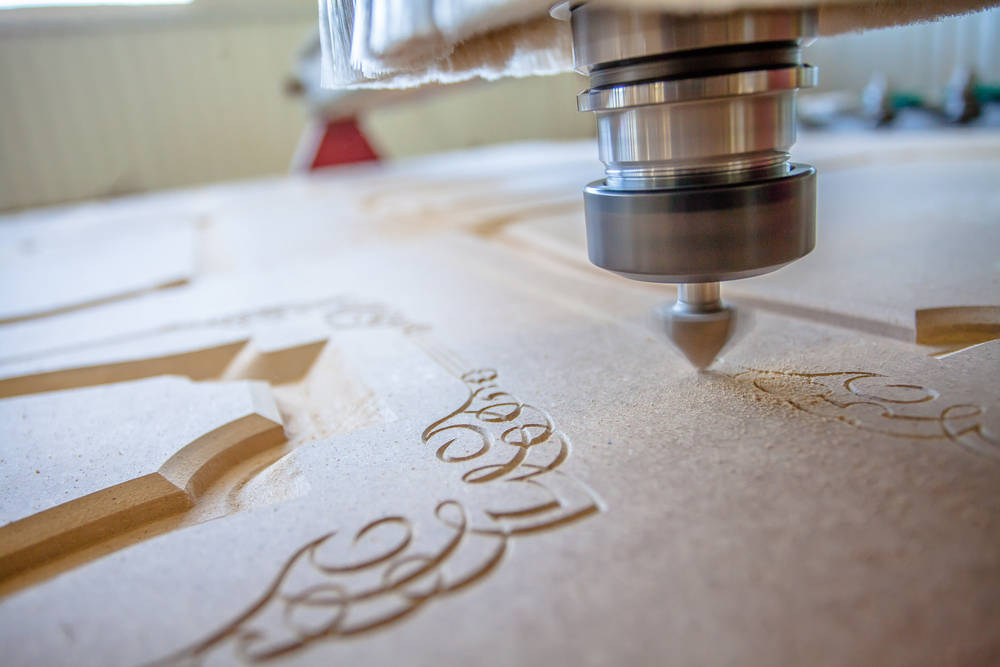
There are many factors to consider when choosing the right CNC machine for your business. The type of business you have, the products you produce, and the volume of production all play a role in determining which CNC machine is best suited for your needs.
1. Type of Business
The type of business you have will help to narrow down the options available to you. For example, if you run a small woodworking shop, a desktop CNC routing machine may be all you need. On the other hand, if you run a large manufacturing operation, you will likely need a more industrial-sized machine.
2. Products You Produce
The types of products you produce will also help to determine which CNC machine is right for your business. For example, if you produce small parts or products with intricate designs, a smaller machine may be better suited for your needs. On the other hand, if you produce large parts or products with simple designs, a larger machine may be more appropriate.
3. The Volume of Production
The volume of production will play a role in determining the size and capacity of the CNC machine you need. For example, if you produce a large volume of products, you will need a machine that is able to handle the increased production demand. On the other hand, if you produce a small volume of products, a smaller machine may be all you need.
CNC Machine Applications
CNC machines can be used to create a wide variety of parts and products. Their applications are limited only by the imagination of the designer. Some common examples of parts that can be machined using CNC technology include:
- Gears
- Bearings
- Shafts
- Spindles
- Pistons
- Cylinders
CNC machines can also be used to create more complex parts, such as:
- Molds
- Dies
- Fixtures
- Tooling
Tips for Using a CNC Machine Safely and Effectively
CNC machines are powerful tools that can help you to create parts and products more quickly and accurately. However, it’s important to use them safely and effectively in order to avoid accidents and injuries. Here are a few tips to help you do just that:
- Read the manual: Before using a CNC machine, be sure to read the manual and understand the proper use of the machine.
- Get training: If you’re not familiar with how to use a CNC machine, be sure to get training from a qualified instructor.
- Use the proper tools: When using a CNC machine, be sure to use the proper tools and accessories.
- Follow safety guidelines: When operating a CNC machine, be sure to follow all safety guidelines.
- Inspect your work: After machining a part, be sure to inspect it for accuracy and quality.
- Maintain your machine: Be sure to properly maintain your CNC machine to keep it in good working condition.
Click here for information on 3D printers and 3D scanners that can be used with CNC machines.
Final Thoughts
CNC machines are an essential part of the manufacturing process. They allow for the precise and efficient production of parts and products. With their wide range of capabilities, they are sure to play a significant role in the future of manufacturing.
Overall, CNC machining is a versatile and accurate manufacturing process that offers many benefits over traditional methods. When used correctly, it can result in parts that are stronger and more precise than those made with other methods. If you’re considering adding a CNC machine to your manufacturing operation, be sure to weigh the pros and cons carefully to decide if it’s the right choice for you.
There is no “one size fits all” solution when it comes to choosing the right CNC machine for your business. The type of business you have, the products you produce, and the volume of production all play a role in determining which machine is best suited for your needs.

